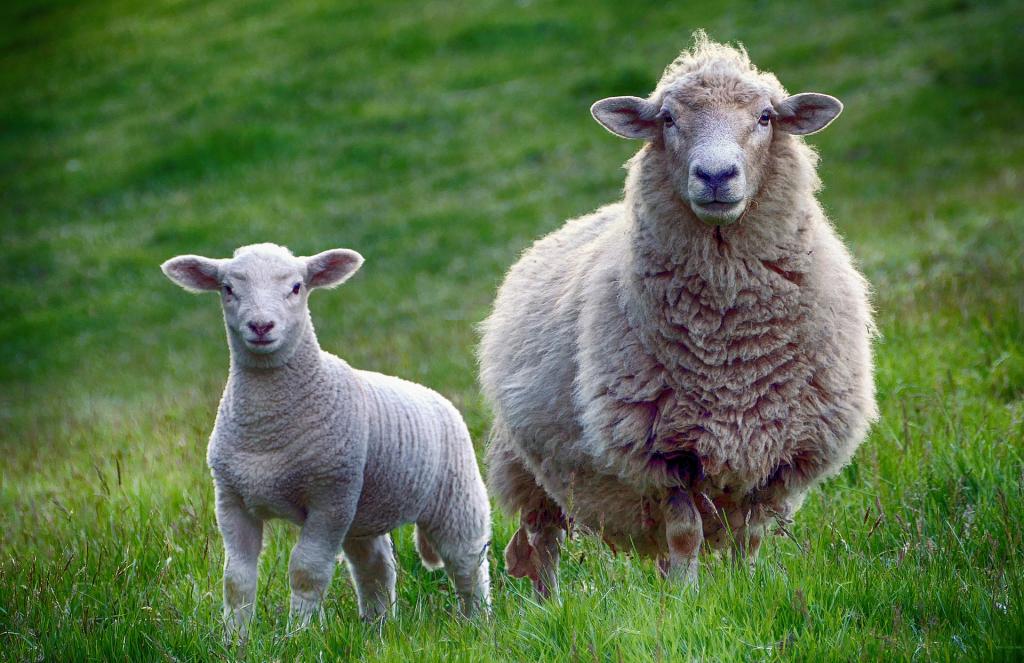Thessaloniki gets ready for its metro launch in November
The underground rapid transit lines have been under construction for almost two decades due to various project delays
 TheMayor.EU logo
TheMayor.EU logo 
Sheep produce considerable amount of waste, which, in The Netherlands is getting less worthy of industrial processing
This might prevent thousands of kilograms of useful material from going to waste every year
Like other cities in Europe, Rotterdam recurs to the more environmentally friendly and more traditional lawnmowing by sheep. Sheep bring nature closer to the urban landscape and can reach places that machines cannot.
Be as it may, just like machines, sheep need “maintenance” in the form of shearing and the result in Rotterdam is the excess of thousands of kilograms of wool every year.
With consistently declining demand for sheep wool, this by-product becomes a burden and the Dutch municipality has been forced to treat it as waste. Luckily, change might be on the horizon, as local actors are investigating whether the wool from Rotterdam’s sheep would be a good material to use in home insulation.
Municipal and provincial authorities, entrepreneurs and researchers from Blue City Lab are currently investigating the insulation properties of the wool produced in the process of sheep shearing in Rotterdam. The idea belongs to city shepherd Martin Oosthoek whose herd grazes the grass in various places in the city and produces about six thousand kilos of wool annually, as the city website has informed.
Mr Oosthoek has been observing a decline of demand for sheep wool in the past two decades, coupled with the fact that there are not many places for industrial wool processing in the Netherlands. At the same time, it is too expensive to transport the material abroad and process it there, so the material often goes to waste.
In more concrete terms, each of his sheep produces 3 kilograms of wool and it costs him 3 euros per shear, he explained for AD.nl. And while there are wool buyers abroad, they are rarely willing to cover the transportation costs. This is how the wool keeps piling up before ending up in the incinerator.
Faced with the considerable costs of shearing and the significant amount of waste it creates, the shepherd approached the municipal authorities asking for a solution on how to put it to good use.
Rotterdam Circular quickly picked up the idea, as it aligns with the municipality’s sustainability objectives - to halve the amount of waste by 2030. Thus, they entrusted a designer to study the qualities of the wool and how the material can be put to good use. Apparently, these qualities also depend on the breed of sheep and the part of the sheep.
The possible benefit, other than waste prevention, is that wool, which can be used as an insulating material, could improve the energy efficiency of homes and reduce energy bills. In addition, sheep wool is considered less detrimental to the environment than other alternatives since it is very resistant.
Some challenges remain, however. There are still very few facilities for wool washing, while too large quantities of it might be needed for efficient roof insulation. This could mean that even readily available, sheep wool is still more expensive than its petroleum alternatives. Hopefully, Rotterdam will soon find a working solution.

The underground rapid transit lines have been under construction for almost two decades due to various project delays

Now you can get your wine in Talence by paying directly in Bitcoin

That’s because the state has to spend money on updating the railway infrastructure rather than subsidizing the cost of the popular pass

Rethinking renewable energy sources for the urban landscape

The examples, compiled by Beyond Fossil Fuels, can inform and inspire communities and entrepreneurs that still feel trepidation at the prospect of energy transition

Now you can get your wine in Talence by paying directly in Bitcoin

The 10th European Conference on Sustainable Cities and Towns (ESCT) sets the stage for stronger cooperation between the EU, national and local level to fast track Europe's transition to climate neutrality.

At least, that’s the promise made by the mayor of Paris, Anne Hidalgo

The underground rapid transit lines have been under construction for almost two decades due to various project delays

At least, that’s the promise made by the mayor of Paris, Anne Hidalgo

Hostal de Pinós is located in the geographical centre of the autonomous region

Despite its church-y name, the district has long been known as the hangout spot for the artsy crowds

Urban dwellers across the EU are having a say in making their surroundings friendlier to people and the environment.

Forests in the EU can help green the European construction industry and bolster a continent-wide push for architectural improvements.

Apply by 10 November and do your part for the transformation of European public spaces

An interview with the Mayor of a Polish city that seeks to reinvent itself

An interview with the newly elected ICLEI President and Mayor of Malmö

A conversation with the Mayor of Lisbon about the spirit and dimensions of innovation present in the Portuguese capital














